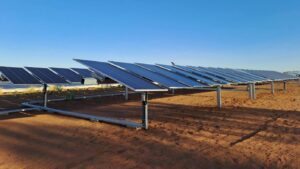The Queensland Competition Authority has been directed to determine the 2020–21 solar feed-in tariff for regional Queensland.
We have employed the same ‘avoided cost’ methodology used to calculate the feed-in tariffs since 2014– 15. This methodology aims to ensure that customers with solar photovoltaic (PV) systems receive a fair and reasonable return for the electricity they export to the electricity grid.
When a retailer sources electricity from solar PV customers rather than the National Electricity Market (NEM), it avoids some direct financial costs.
These avoided costs are wholesale energy costs, NEM management fees, ancillary services fees and transmission and distribution losses (energy losses).
However, retailers still incur other costs associated with providing retail electricity services to their customers, including retail operating costs and network costs.
Feed-in tariff for 2020–21
The 2020–21 feed-in tariff for regional Queensland is 7.861 cents per kilowatt hour (c/kWh). This is 0.2% (0.019 c/kWh) higher than last year’s feed-in tariff of 7.842 c/kWh. This marginal increase is driven mainly by higher ancillary services fees and energy losses, which were mostly offset by a decline in wholesale energy costs.
These estimates are based on the analysis from our consultant, ACIL Allen. We consider that ACIL Allen’s methodology has adequately taken into account the potential impacts of covid-19 on the National Electricity Market (NEM) through the incorporation of contract prices up till early May 2020. These contract prices reflect, to date, the market participants’ views of the impacts of covid-19 on the NEM.
Key drivers:
• higher ancillary services charges—reflecting a surge in demand for ancillary services, including
due to the Basslink interconnector outage in Tasmania, the planned outage of the Heywood to Mortlake line in Victoria and the extended power system separation event between South Australia and Victoria.
• higher energy losses—reflecting higher distribution and transmission losses as published by the Australian Energy Market Operator.
• lower wholesale energy costs—reflecting a decline in contract prices primarily due to the large amount of renewable generation entering the NEM and the reduction in gas prices.










